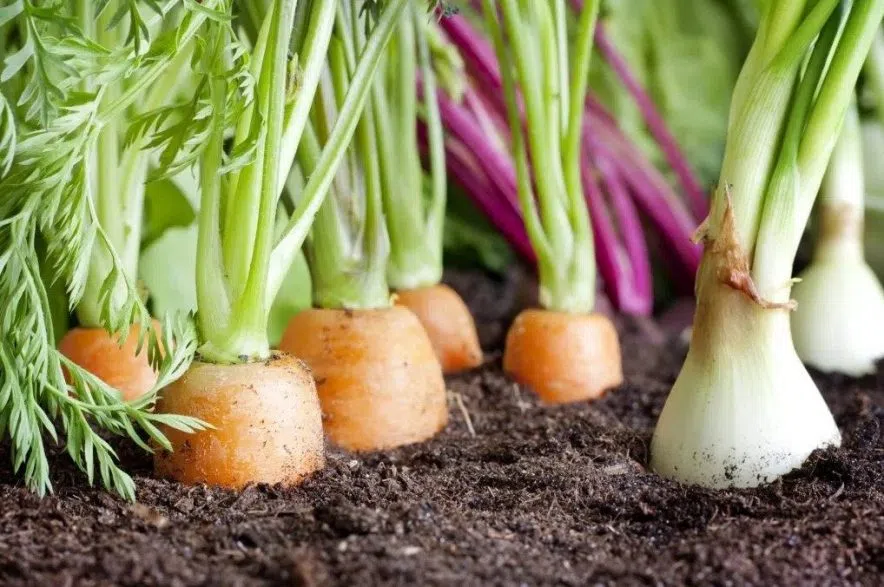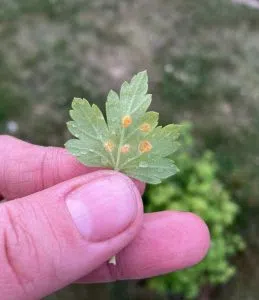Green thumbs around Saskatchewan are gearing up for another season of gardening this summer.
There’s still time to get that garden in the ground. This week Rick Van Duyvendyk, owner of Saskatoon’s Dutch Growers, joined The Evan Bray Show for a mini Garden Talk segment. Whether it’s questions about your lawn, garden, pruning trees, shrubs, bushes, flowers and more, Rick shares his best tips and tricks.
Garden Talk airs every weekend from 9 a.m. to 11 a.m. on Sunday. In each episode, Rick and Jill dive into timely gardening topics, from seasonal care tips to the latest trends in landscaping.
Listen to the full interview here:
The following transcript has been edited for length and clarity.
Bray: People are in full garden mode. Is it a late start this year, or are we on schedule?
Van Duyvendyk: We’re on schedule. The only problem is we had a great start to the spring. The week before Mother’s Day, it got really warm, and then it cooled right down. So a lot of people were saying their tomatoes are a bit stunted, or some of their seeds haven’t germinated.
But with the heat now, people can put water in the gardens and the garden will just take off.
Bray: What do you think about no-mow-May, where people don’t mow their lawn during the early part of the season.
Van Duyvendyk: I suggest letting it grow long, not just at the start of the season, but during the summer, too. You should leave at least two and a half inches, some people put it down to an inch and a half. When you get really hot temperatures, or really windy conditions or not very much rain, then what happens is that you’re scorching the roots.
If all that grass were a bit longer, it shades the root system and lets the grass grow in a little thicker, and then it would compete out things like dandelions and weeds. Even ants don’t like to be in a nice, healthy, thick lawn. They like to be in grass that’s a little bit thinner and a little bit drier. If you leave it longer, you don’t have to water as much.
Bray: Is there treatment for rust on a gooseberry bush?
Van Duyvendyk: You can use copper spray. You need to spray three times about 14 days apart. The biggest thing you can do to stop rust is make sure that you water at the roots of the plant, rather than have the sprinklers hit the top of the plant.
If the sprinklers are coming on every day or every second day, and especially if they’re coming on in the evening, then you’re going to have powdery mildew and rust. Also make sure that you keep your plant healthy, fertilizing it once every three weeks. Use a fruit and berry fertilizer and then you’ll have good, healthy plants, lots of growth and you won’t have the rust problems.
Bray: I want to go to the phone line now, and we’ll take Paul from Saskatoon. Thanks for calling in. You’ve got a question for Rick?
Paul: We have an old growth, I think this tree is probably about 40 years old, it’s a weeping willow. It branched out and now it’s split down to the base of the tree. Can I save it, or should I just cut out the healthy part and just lose the rest of the tree?
Van Duyvendyk: If it’s split all the way down, you can try to repair it with bolts, running some rods through the branches. But the problem is, every time it rains, the water is going to go down the branches and into that and rot the inside of the trunk out. So you’re better off to cut that off and then let it dry up, and then you can treat that long wound with pruning paint.
Read more:
- Garden Talk: Save money by being water wise in your yard this summer
- Garden Talk: Tips for planning a thriving home vegetable garden
- Garden Talk: Lots to consider when planting a tree in a new neighbourhood
Bray: Here’s a text from Kelly in Kinistino: My apple tree has not flowered this year, not sure why. It didn’t even bud out. Any thoughts?
Van Duyvendyk: It should have blossomed. Sometimes, if they had a heavy crop one year, they won’t produce the next year, but it should have leafed out. And if it hasn’t leafed out, then you need to check what’s going on. Check the bark on the south side, whether there’s sun scald. It looks like a burn mark on the bark, and the bark looks like it’s bubbling.
You can also look for any rodents like voles, which eat the bark at the base of the tree, underneath the snow, and then they stop the sap from going up the tree, and the tree is finished if that happens.
Bray: Kirk from North Battleford has a number of questions here. Is it too late to aerate and overseed now?
Van Duyvendyk: No, absolutely, you can aerate. I mean, you look at the golf courses, they aerate a few times a year because of the traffic.
You can also overseed right now. That works perfectly. Just make sure that you rake your grass beforehand to loosen up the thatch, and then once you seed, rake it again so you get the seed in contact with the soil that just doesn’t germinate on top of that thatch.
Bray: Question number two, he says we have asparagus in our yard, and we’ve been on top of them fairly consistently, but now have gone to ferns. Should we cut the ferns down, or is the harvesting season coming to an end already?
Van Duyvendyk: Some of the harvesting seasons have come to an end, but you can cut the ferns off, just don’t cut them all off. Sometimes you can get another set coming up, but it depends on how new it is. If it’s a brand new crop, I suggest leaving the ferns, because you shouldn’t harvest for almost two years before you take your first crop. When you harvest them they should be at least your your little finger size or at least pencil size.
Bray: Last question quickly from Kirk. Our zucchini and pumpkin plants are already flowering. The plants are still fairly small. Should we be cutting the flowers off?
Van Duyvendyk: You can if you want, or you can at least cut back on some of them. If you don’t have very many bees, you can be the bee and you can take a little duster or a little Q-tip and just go from flower to flower pollinating as well.
Bray: Ken in Saskatoon, what’s your question for Rick?
Bray: Sharon in Saskatoon wants to know about fertilizer for garden plants, like tomatoes, garlic, potatoes, and carrots.
Van Duyvendyk: Anything that grows into the ground, you don’t want to fertilize very much, like potatoes, onions and carrots. Just use a bit of compost but not a lot, because potatoes, you put too much compost, you’ll get potato scab.
The best thing you can do is get an organic fertilizer. Even alfalfa pellet tea works really good. You need something with calcium in it. Calcium is a great element to make your plants healthy and to resist diseases.
Bray: Got another text here, what can I do to kill creeping bell flowers that are in between my lilacs?
Van Duyvendyk: The best thing to do is to pick them out before they go into flower, if you can. Bell flowers are a tough one, because they have a zillion seeds and when they spread the seeds out, they cause problems.
What I suggest is to pick them. And if you haven’t picked them yet, or the seeds have gone down, put a layer of corn gluten down, which is an organic pre-emergent herbicide that works really well, as long as you put it nice and thick. It’ll stop them from germinating.
Bray: I’ve got Colleen on the line from Regina.
Colleen: We’re planting some cedars. We live in Regina, so the soil is very clay-based. We’re planting the cedars along the fence line. And I’m just wondering if you can give us any tips on the ground preparation for that. I’ve heard that gypsum is helpful?
Van Duyvendyk: Gypsum works really great but the biggest thing is where you’re going to be planting. Wherever you have an area where the water accumulates, make sure you raise that area up maybe two inches or three inches higher before you plant.
Don’t plant deep. Don’t leave a furrow around each plant. And if you put drip irrigation, make sure you watch that you’re always probing the soil. I use a piece of rebar, and I poke down to the bottom of the planting hole, because sometimes you dig a hole into clay, you actually dig a bowl, and it could fill up from the bottom up, and the tree can start looking a little bit dry, and then you water it more. So watch for that, and make sure you only give as much water to keep them moist.
Bray: I’m going to ask a goofy question. I watched my grandfather plant a couple of trees on the farm years ago when I was a kid. He put rusty nails in the ground. Is this a thing people do?
Van Duyvendyk: That’s putting iron in there. He did that because he’s trying to stop leaves turning yellow. What you can do is just watch your pH.
Regina is not too bad; it has a pH of seven. You want a pH of about seven. If it’s up about 7.4 or higher, then you can use some aluminum sulphate around the plant to lower the pH, and then it’ll make your plants healthier and be able to take up nutrients better.
Bray: I got a text from Woody in Lloydminster, what to do with flea beetles in my radishes?
Van Duyvendyk: For my radishes, I make a furrow and I space it out. One week, I’ll put 25 per cent in. The next week, I’ll put another 25 per cent and next week, another 25 per cent.
You can also use what is called a crop cover, basically a white fabric you put over top and it will keep the flea beetles from getting at them.
Bray: I’m going to keep going on the text line, Dean in Regina. I planted new Black Hill spruce last year. Should I fertilize them this year?
Van Duyvendyk: Yes. What I suggest you use is a 15-30-15 or an acid-base, even a 30-10-10 at half strength would work really good, because 30-10-10 is an acid-base. It should get the plants off to a good start, but go half the rate that it says in the container, and the plants will just take off.
Read more:












